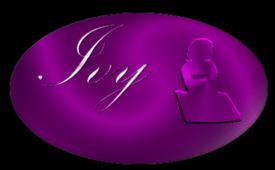Meat portions?

jdelisle
Posts: 1,050 Member
I don't own a scale (and have no current plans to purchase one). I was just wondering how you guys determine your portion sizes?
I bought some beef straight from a cattle farm (sooo much cheaper) so its all butcher packaged but the steaks and such do not have the weight on the package.
Tonight I am having T-Bone Steak. Mine is fairly small and I won't eat the whole thing but I'm not sure how many oz to log it as?
Is there a quick method to eyeballing it? Like, if I were to compare it with something else, what size would it be?
Thanks for all of your input!
I bought some beef straight from a cattle farm (sooo much cheaper) so its all butcher packaged but the steaks and such do not have the weight on the package.
Tonight I am having T-Bone Steak. Mine is fairly small and I won't eat the whole thing but I'm not sure how many oz to log it as?
Is there a quick method to eyeballing it? Like, if I were to compare it with something else, what size would it be?
Thanks for all of your input!
0
Replies
-
I don't own a scale (and have no current plans to purchase one). I was just wondering how you guys determine your portion sizes?
I bought some beef straight from a cattle farm (sooo much cheaper) so its all butcher packaged but the steaks and such do not have the weight on the package.
Tonight I am having T-Bone Steak. Mine is fairly small and I won't eat the whole thing but I'm not sure how many oz to log it as?
Is there a quick method to eyeballing it? Like, if I were to compare it with something else, what size would it be?
Thanks for all of your input!0 -
I think a serving size of meat is the size of the palm of your hand.0
-
nah you need to weigh it... that's the only way to be sure. Density plays a huge roll in weight and since all beef is different you should really "plan" on getting a scale if you want to know how much you are eating. Im sure there will be people on here who will tell you "it's about this big ______" but that's a load of bs if you ask me. You can get a cheap food scale pretty much anywhere.0
-
I think a serving size of meat is the size of the palm of your hand.
she's asking about the weight, and you're thinking of vegetables and fruit.0 -
I BELIEVE and hopefully someone can confirm this but 1 serving is approx the size of the inside of you palm??and that's about 3 or 4 oz??0
-
i think its worth purchasing some cheap scales its not easy to guess and so easy to get it wrong.
I have made some really big boo boos like that.
The only other option is too look at some supermarket packs so u know what those weights iook like
but to be honest I think scales are the better option if u want to be accurate.0 -
I just shared a half of a 10 oz steak with my daughter the other day, my half was about the size of my palm, and 1 & 1/2 inches or so thick......so that would have been 5 oz. hope that helps.0
-
hehe, I've never heard of that before... serving or not she's asking about weight. As in how many calories will I be consuming if I eat ___oz. of this beef I just bought. Doesn't anyone understand that the way something looks , in perticular meat like beef, has no bearing on it's weight??0
-
I can't help you on your question but I can tell you I recently bought a scale (for the first time ever) and this just might be me but I was ASTONISHED to see how off I was when I "eyeball" it vs. actually weighing it. I was leery to get a scale because that just sounded so obsessive to me but I have found I really enjoy using one. Now when I add a packaged food to my diet that doesn't give an "ounce" total per serving (especially when it is something you can't just count out, like noodles, etc.) I am quite annoyed. I say spend that $8 bucks like I did and get yourself a scale!
ps. I think you CAN equate a piece of meat to the size of something else--after all, how many times have I heard a serving of chicken is the size of a pack of cards--and not to be gross but a palm and a cut of beef are both meat so I don't think we should be condescending to others, it sounds reasonable!0 -
Maybe I will just get a scale. I just hate weighing everything before I eat, but if it helps me be healthy then so be it!
I've totally heard that one portion is the size of your palm before... however I don't understand that one.... Everyone's hands are so different! My husbands palm is probably twice the size of mine!
Anyways thanks everyone for your input!0 -
wow sparky, we're just trying to figure something out here! I have seen that a portion of meat, meaning 3 oz is the size of a deck of cards, hope this helps!0
-
At www.calorieking.com, there are photos to help you visualize an appropriate portion size.0
-
That's awesome, thanks!0
-
Eating sensible food portions (portion control) is essential to weight loss as well as to maintaining a healthy weight. Unfortunately, the importance of portion control is often underestimated. In fact, the trend toward larger food portions gets much of the blame for the growing number of overweight people.
You may think one portion of food is the same as one serving, but that's rarely correct. A serving is a standardized amount of food with specific calorie and nutrient content. Servings usually are defined by common measurements such as cups, ounces or pieces. On the other hand, a portion is the amount of food you choose to eat and is often greater than one serving size. Understanding this distinction can help you learn how to eat the right amount of food.
Sizing up your servings
The first step in portion control is to understand serving sizes, which may be smaller than you think. Use these visualizations to estimate appropriate serving sizes:
A medium apple or orange is the size of a tennis ball.
A medium potato is the size of a computer mouse.
An average bagel is the size of a hockey puck.
A cup of fruit is the size of a baseball.
Three ounces of meat is the size of a deck of cards.
Three ounces of grilled fish is the size of your checkbook.
One ounce of cheese is the size of four dice.
One teaspoon of peanut butter is the size of the tip of your thumb.
Food-label servings
You often see serving sizes listed on food labels. They aren't a recommendation of how much you should eat, but are simply the amount of food on which the product's nutritional analysis is based. This information allows you to compare the nutritional value of one product with that of another.
Food-label servings are based on the amount of that particular food that people normally eat and are listed using standard household measurements, such as cups, ounces or pieces. Check to see if the amount you normally eat is similar to the serving size on the label. If you eat more, then the number of calories and nutrients you get from that item will be higher. A figure indicating the servings per container also is included so that you can calculate the calories and nutrients in the entire package.
Right-size your portions
If you're finding it difficult to bring your portions in line with recommended servings, try these suggestions:
Read food labels to determine serving sizes.
Discourage overeating by placing only the appropriate servings of food on dinner plates, rather than put serving bowls on the table.
Don't eat second helpings.
When eating out, ask for a takeout container. Save part of the meal for another time.
Split a meal with your spouse or friend.
Don't feel as if you have to clean your plate.0 -
wow sparky, we're just trying to figure something out here! I have seen that a portion of meat, meaning 3 oz is the size of a deck of cards, hope this helps!
I realize that... Im trying to help too, but the fact of the matter is that weight is nothing that can be acurately visualized or represented by a physical comparison as all meats and even meat of the same type from different places will weigh in differently. I dont think misleading someone, weather you are trying to help or not, is in the end helpful at all. Sure maybe this once just to get the meal made might warrant a comparison but I think she was asking for advice as well, and the best advice would be to spend the 10 dollars or so on a scale and take the guesswork out of it . That's just my opinion and I certainly didn't mean to offend you or whatever I did, but the person in question appreciated my input and that's good enough for me at this point.0 -
I can't help you on your question but I can tell you I recently bought a scale (for the first time ever) and this just might be me but I was ASTONISHED to see how off I was when I "eyeball" it vs. actually weighing it. I was leery to get a scale because that just sounded so obsessive to me but I have found I really enjoy using one. Now when I add a packaged food to my diet that doesn't give an "ounce" total per serving (especially when it is something you can't just count out, like noodles, etc.) I am quite annoyed. I say spend that $8 bucks like I did and get yourself a scale!
ps. I think you CAN equate a piece of meat to the size of something else--after all, how many times have I heard a serving of chicken is the size of a pack of cards--and not to be gross but a palm and a cut of beef are both meat so I don't think we should be condescending to others, it sounds reasonable!
I guess so but have you ever weighed your palm? jdelisle was asking about how much her t bone steak would WEIGH, not weather or not it would represent a serving. I think we're talking about two different things here LOL. Oh well, it's all good.0
This discussion has been closed.
Categories
- All Categories
- 1.4M Health, Wellness and Goals
- 397K Introduce Yourself
- 44.2K Getting Started
- 260.9K Health and Weight Loss
- 176.3K Food and Nutrition
- 47.6K Recipes
- 232.8K Fitness and Exercise
- 456 Sleep, Mindfulness and Overall Wellness
- 6.5K Goal: Maintaining Weight
- 8.7K Goal: Gaining Weight and Body Building
- 153.3K Motivation and Support
- 8.3K Challenges
- 1.3K Debate Club
- 96.5K Chit-Chat
- 2.6K Fun and Games
- 4.5K MyFitnessPal Information
- 16 News and Announcements
- 18 MyFitnessPal Academy
- 1.4K Feature Suggestions and Ideas
- 3.1K MyFitnessPal Tech Support Questions








